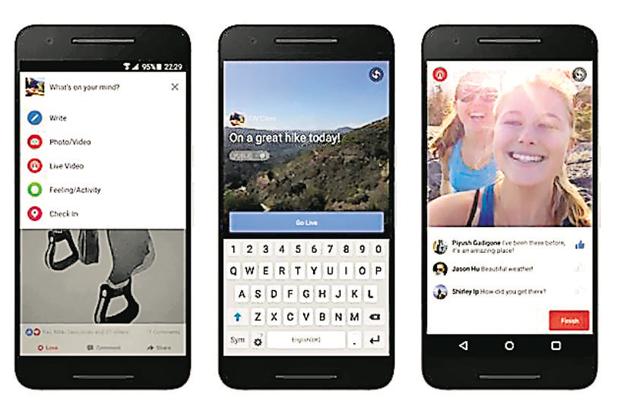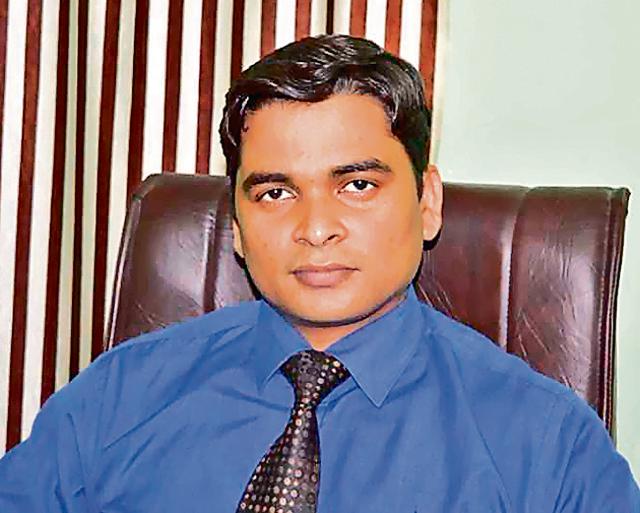Live-streaming a frightening fixation
The dark side of live-streaming on social media is on a high like never before, with number of live-stream incidents—assaults, shootings, robberies, and suicides -- steadily rising on Facebook Live last year as well as this year.
The obsession with social media is turning into a frightening fixation for many. The dark side of live-streaming on social media is on a high like never before, with number of live-stream incidents—assaults, shootings, robberies, and suicides -- steadily rising on Facebook Live last year as well as this year.

Incidents happening doesn’t cease to shock us. Recently a strange incident surfaced on the Internet where 18-year-old teenager from California live-streamed her sister’s death in a terrifying car crash on Instagram. Then there were those who were live-streaming their suicide bids, including a Mumbai student who live streamed his suicide on Facebook before jumping to death from the 19-storey room of Hotel Taj Lands End. Minutes before taking his life, the victim identified as Arjun Bharadwaj had streamed a Facebook Live video, which went viral on social media. There are numerous incidents and accidents like this that have left all shocked.
Dr Rajesh C Pandey, Psychologist offers some basic reasons and suggestions for parents and elders to follow:
Lack of social life in case of youngsters as also too much peer pressure and being highly competitive.
If your kid is highly competitive and takes competition way to seriously, then parents should take this as a problem and consult a councellor.
Less or no physical activities should be dealt with on right time. One should avoid being a phubber and should give minimum or no access to internet to kids.
Better communication between children and parents will always help. Also parents should keep a watch on what their children are watching and following on social media.
Talking about this disturbing trend, psychologist Dr Rajesh C Pandey says, “The reason for youngsters falling prey to this trend is that live-streaming a video gives them a larger audience to show their ‘stunt’; the number of views and likes for such videos is quite high, which is absolutely alarming. Everybody wants quick fame in today’s time and social media has given them that recognition and popularity in no time. Sad part is that it’s no more a trend, it is turning into an addiction.”

Ashish Ranjan a youngster says, “Live-streaming of everything is definitely not good for our society. Such incidents show that we are losing sensitivity. Technology is turning us into artificial beings who worry only about views and likes of virtual world and not real human feelings and emotions. Only if we learn and also make our kids learn we should learn to use social media responsibly.”
For many this trend is more to get attention while for many behaving weird on social media is more for fun. “In our quest to be the funniest or most outrageous, we are unknowingly becoming the culprit of heinous crimes. We need to restrain these practices else their upgraded versions will be more horrendous,” adds Astha Bhardwaj, NGO professional.Live-streaming on social media started with the launch of Periscope and Vine, and has continued today into the mainstream with the Facebook Live platform instead of becoming a great communication tool today, it has left parents and authorities worried. Live-streaming platforms today are being used to narrowcast, self¬ harm or go for criminal activity against others.
Agrees media professional Shyamnandan Kumar. “Rise of live-streaming of personal happenings and events on social media sometimes surprises, sometimes ignites anger while sometimes pleases too. However, this trend is still in an immature state but still causing enough damage,” he says.
A few out there feels every new technology has its positives and negatives, so it’s on each individual how to deal with it. “Like every new technology in the world, live streaming has its pros and cons. It can be useful and fun for teens and adults alike. While some people use it for filming disturbing scenes, the technology cannot be blamed for their actions,” adds Sejal Sharma, an engineering student.
Another youngster Sana Sabah sums it up, “Every single thing from wake-up selfies to food they eat goes on social media. This habit of seeking approval (in the form of likes and shares) has blurred the line between what does and what does not need to be published. It’s actually an indicator that how lonely we have become.”





